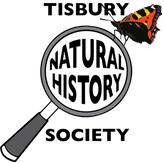|
As Christmas approaches, thoughts turn to decorating our homes for the festive season. Along with spruce trees and mistletoe, the plants I most associate with Christmas are the holly and the ivy. As well as providing decoration and being easy to identify, these common plants are important for our wildlife. Although hollies can live for up to 300 years, they rarely attain a large size. As they often grow in the understorey of woodlands, they can develop quite a straggly form as they seek whatever light they can reach. This slow growth makes the white wood very dense and good for a number of uses as well as the traditional walking stick.
Male and female flowers occur on different trees and are white with four petals. The flowers provide nectar and pollen for pollinating insects as well as a food source for holly blue butterfly caterpillars. These feed on the flowers of holly in spring while those emerging from the eggs laid in summer predominantly feed on ivy flowers. Younger trees have spiky leaves, but as trees grow and age, the leaves are more likely to be smooth, especially in the upper branches. Unless a female plant has a male sufficiently close by, its flowers may not be pollinated and will not develop the bright scarlet berries that look so attractive against the glossy leaves. These berries are a vital source of food for birds in winter, and small mammals, such as wood mice and dormice and this helps to spread the seeds. In the autumn and early winter, the fruits are hard and apparently unpalatable. But after being frozen or frosted several times, the fruits soften, and become milder in taste. At this point, favoured trees can be stripped by groups of thrushes which may noisily dispute possession of this food source. Berries of ivy are also in demand as winter food for birds. They are black and are held in clusters on mature plants which are the only ones to produce the yellowish-green flowers. These bloom in small clusters in late summer when most other countryside flowers are over and so attract many bees and late flying butterflies such as the red admiral. Ivy is a woody stemmed, self-clinging climber but can also grow as a trailing plant which roots at many points as it spreads. Ivies have enormous value to wildlife, providing all-important year-round shelter and nesting sites for huge numbers of creatures including birds, small mammals and invertebrates. Ivy has long been accused of strangling trees, but it does not harm the tree at all simply using it for support as it climbs towards the light. As well as its association with Christmas the ivy has a number of symbolic connections. A wreath around the head was thought to prevent drunkenness and it was also thought to be a symbol of fidelity. Newly married couples used to be presented with an ivy wreath and an ivy frond remains a part of many a bridal bouquet today. by Andrew Graham Comments are closed.
|
Photo: Avocets (Izzy Fry)
The headers display photos taken by our members. Do get in touch via the Contact Form if you'd like to submit a photo for selection.
Archives
May 2024
Categories
All
|

 RSS Feed
RSS Feed